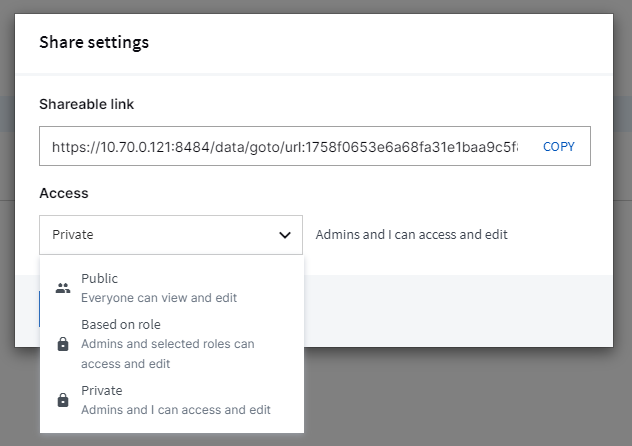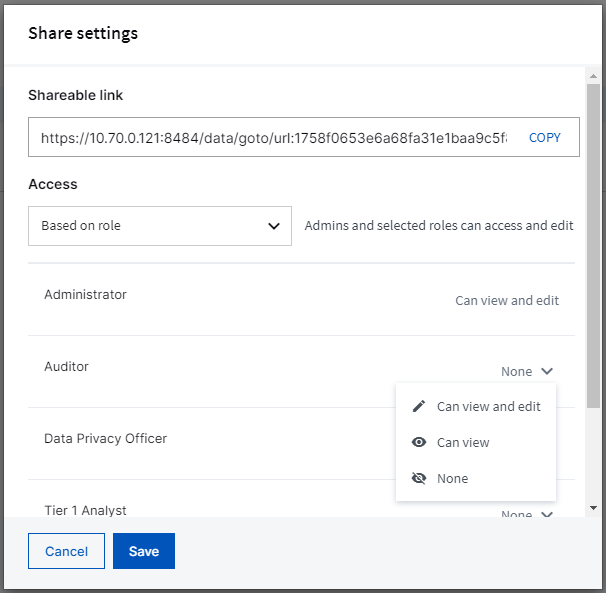- About Exabeam Data Lake
- Data Lake Search
- Visualize Results in Exabeam Data Lake
- Exabeam Data Lake Dashboard Setup
- Exabeam Data Lake Reports
- Export Limits for Large Volume Exabeam Data Lake Query Results
- Access Restrictions for Saved Objects in Exabeam Data Lake
- How to Forward Alerts Using Correlation Rules in Exabeam Data Lake
- How Correlation Rules Work
- Correlation Rules in Data Lake vs Advanced Detection Rules in Advanced Analytics
- Auto Disable Correlation Rules during High Latency
- How to Find Disabled or Erred Correlation Rules
- Rule Types in Exabeam Data Lake
- Create a Correlation Rule in Exabeam Data Lake
- Correlation Rules Table in Exabeam Data Lake
- Blacklist/Whitelist Correlation Rules using Context Tables in Exabeam Data Lake
- A. Technical Support Information
- B. Supported Browsers
Access Restrictions for Saved Objects in Exabeam Data Lake
Object-Based Access Control (OBAC) manages the viewing and editing of tangible output products such as visualizations, dashboards, and reports. Objects are subject to the following:
Access to newly created objects are by default restricted to the user who created and saved them. New objects are created with default Private access configurations to the originating user.
Permissions are granted or denied to user roles.
Screenshot shares (such as search results page) are based on user roles.
Access restrictions for saved objects are configured per object.
For more information about OBAC, see Data Lake Administrator Guide > User Management > Object-Based Access Control.
To configure the access restriction of a saved object:
Select the object from your library and then click Share.

Select the Access type Based on role.

Select the type of permission for the role which will be granted or denied access, and then click SAVE.
